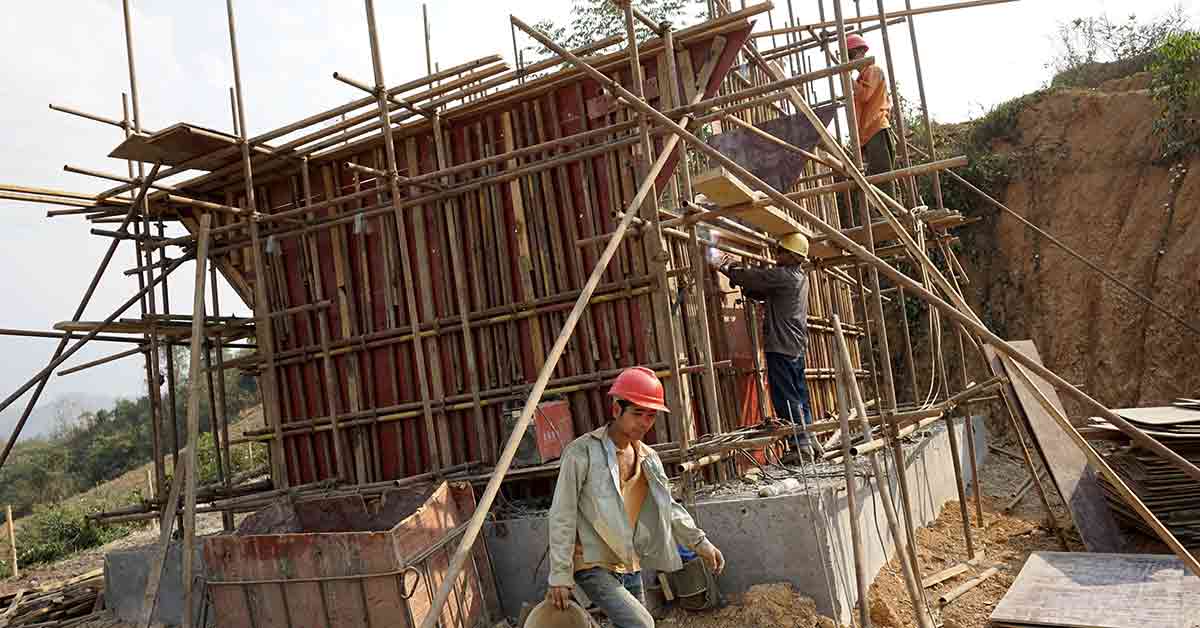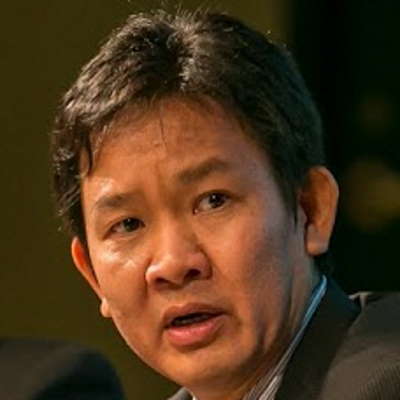Rapid economic development over the past two decades has transformed the Southeast Asian region to the point where it is able to participate in international production networks which allows more exports of manufactured products, textiles and other primary high-quality valued-added products. This transformation is due in part to foreign investors who have been attracted to the region because of favourable labour conditions, growth of connectivity and innovation, and regional political stability as driven by the Association of Southeast Asia Nations (ASEAN) vision.
These changes have provided many additional growth opportunities for the region, which have in turn improved the well-being of ASEAN peoples through income generation and employment. As the region has embarked on continued progress, the development of quality infrastructure, connectivity and innovation are keys for the region to ensure prosperity and sustainable development.
However, we can anticipate that post-COVID-19 economic recovery will drive increased economic activities and energy demand in all sectors which indicates the need for sufficient investment, especially in secured energy infrastructure and other hard and soft infrastructures, to fill the infrastructure gaps. To satisfy this growing demand, huge energy related infrastructure investment is necessary between now and 2040.
Infrastructure Investment Gap
The East Asia Summit (EAS) Energy Outlook 2019 projects that US$430-US$440 billion will be necessary in the power generation sector, including US$149-US$226 billion for refineries and US$16-US$28 billion for liquefied natural gas (LNG) terminals.
More broadly, the International Energy Agency (IEA) Outlook 2017 projects that US$2.1 trillion will be required for oil, gas, coal, and power supply. More than 60 percent of investment goes to the power sector with transmission and distribution (T&D) accounting for more than half of the total necessary investment. Globally, the infrastructure investment gap is estimated to be US$15 trillion from now till 2040. According to the Ministry of Finance in Japan, Asia alone will have a US$4.6 trillion investment gap from now till 2040.
Thus, the huge potential for energy infrastructure-related investment will need to be guided by the right policies to promote quality infrastructure and resilience in ASEAN for growth and sustainability. Thus, ASEAN will need to prepare an array of policies suited to specific conditions to facilitate investment opportunities.
The region is very fortunate to have different stakeholders supporting infrastructure improvement in a manner that bridges the missing links in ASEAN. In this sense, ASEAN should focus on key development partners that promote long term development sustainability; especially the focus on quality infrastructures, building human resources and bringing in knowledge and innovation to the region.
For example, Japan has been pioneering and promoting quality infrastructure for many years in order to empower Asia to be a growth centre to drive the global economy. Most importantly, at the Group of 20 (G-20) in Osaka in June 2019, Japan successfully launched the initiative ‘G-20 Principles for High-quality Infrastructure Investment’ which is key to promote investment for sustainable development.
The principles take into account many aspects of sustainability to ensure that quality infrastructure is in harmony with local environment, communities, and people’s livelihoods through generating local employment and facilitating technology transfer. So far, Japan has committed US$110 billion for quality infrastructure in Asia from 2015-2020 which will accelerate financial resource mobilisation from private companies around the globe into the region.
This is in line with Japan’s global commitment to promote high-quality infrastructure investment to address sustainable economic growth, reducing poverty and disparity.
Other initiative such as Free and Open Indo-Pacific (FOIP) of the United States (US), Japan, Australia, and other regional partners have also been well received by ASEAN as an alternative or to some extent as complementary to other initiatives for infrastructure investment. Further, to promote the Principles of High-Quality Infrastructure, the US, Japan and Australia announced the ‘Blue Dot Network’ in November 2019 as a multi-stakeholder initiative for governments, the private sector, and civil society to join hands in order to promote high-quality infrastructure investment.
Hard Infrastructure Development
Through this initiative, the US, Japan and Australia plan to certify projects around the world that meet high-quality infrastructure standards. It is estimated that about US$94 trillion will be invested globally over the next two decades to meet the growing need for infrastructure development.
More specifically, Japan’s promotion of quality infrastructure in the Southeast Asia region can be seen in its efforts to enhance ASEAN’s connectivity through core land and maritime corridors and soft infrastructure development. The land corridors are the high-quality hard infrastructure development connecting the South China Sea and the Indian Ocean, developing the Southern Economic Corridor (SEC)’, connecting Ho Chi Minh, Phnom Penh, Bangkok and Dawei as well as ‘East-West Economic Corridor (EWEC)’ that expands from Da Nang to Mawlamyaing in Myanmar as a trading centre and seaport to connect Southeast Asia to India and other regions.
Another hard infrastructure development is the ‘Maritime Economic Corridor’ which consolidates connectivity through the development of port, port-associated industries as well as energy and ICT networks in major cities. This allows the Mekong sub-region to connect to Malaysia, Singapore, Indonesia, Brunei and the Philippines, thus enhancing connectivity in all of ASEAN.
In recent years, China has invested heavily in Asian infrastructure through its Belt and Road Initiative (BRI). However, there are growing concerns from recent experiences of BRI megaprojects that have received criticism on sustainability issues such as creating severe debt for partner countries and other environmental and societal sustainability issues. The BRI Vision Statement does not offer explicit guidelines on how Chinese investors ought to regard environmental protection or civil society. However, it does call for strengthening ‘people-to-people bonds’ and creating ‘win-win’ cooperation between Chinese and host country stakeholders.
However, if the BRI is to be successful, the Principles of High-quality Infrastructure initiative will need to be considered in all infrastructure investments, and local communities developing BRI projects will have to play an active role while host-country stakeholders will need to improve the quality of their governance systems.
Innovative Development
To facilitate quality infrastructure investment, ASEAN will need to work more towards institutional connectivity to facilitate international commercial trade and policies, removing behind-the-border issues as fast as possible. Innovation through research and development (R&D) can increase capabilities and human resource development to attract more industrialised investment and high industrial technology.
People-to-people connectivity in ASEAN has also improved and the region will be deeply integrated not only in economic aspects, but also social and environmental aspects such as health insurance and environmental regulation and standards.
The region is moving towards innovative development (‘Industry 4.0’) in which policies will be needed to facilitate the back bone of economies such as small and medium-sized enterprises (SME) development, highly efficient economies, smart cities, smart agriculture – basically innovations in all sectors. Strengthening institutional frameworks, establishing procedures, providing access to support services, credit markets and finance, technology upgrading, market expansion, and entrepreneurship, can promote inclusive growth and development in the region.
ASEAN should be bold in facilitating all these investment opportunities, guided by clear principles for quality infrastructure to promote sustainable development. ASEAN should also be responsive to the risks caused by the COVID-19 pandemic. Individual member states and ASEAN as a group may need to work on a ‘green deal recovery’ to bring back normal economic activities as soon as possible through various measures including financing green projects and promoting quality infrastructure in the economic recovery package.
Thus, by promoting quality energy infrastructure investment and connectivity within and with neighbouring countries, ASEAN could bring the best energy price to its consumers while facilitating sustainable growth.
Related Articles:

